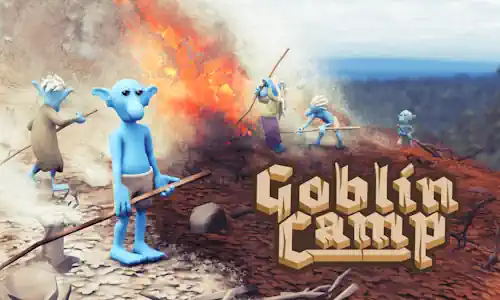What is Finnic paganism?
One of the key inspirations for Goblin Camp is Finnish or Finnic paganism. This is the ancient, pre-Christian culture of the people who would later become the Finns. It hasn’t survived as a living tradition, but many traces of it still live among us, and we can try to reconstruct at least some of it.
Finnish paganism is a generally used name for this tradition, but it isn’t a very good one. The main problem is that in those times Finland, or Suomi, only referred to the area around present-day Turku; most of the people living in this culture wouldn’t have thought of themselves as “Finnish” at all. The other problem is that calling it Finnish paganism today makes it seem like something that’s particularly associated with the country that is Finland now. That’s also not the case, as it was part of a much broader culture that’s in no way the exclusive property of Finland or Finns today. Academics use Finno-Baltic or Finnish Baltic, which is a little bit clunky. I think a better name would be Finnic paganism, by analogy with the Finnic languages and peoples, so that’s what I’ll be using from here on.
The point I want to make with this is that Finnic paganism is part of a broader cultural heritage that Finns share with our neighbors and other related peoples. This is especially important because Finnic paganism has been wiped out in Finland as a living tradition. That means we have to look at other cultures to try to reconstruct what it was like, but at the same time we need to be careful to not start appropriating those cultures as our own.
The roots of Finnic paganism are in Siberia. Probably at least some of the ancestors of the Finns came from Siberia and brought this culture with them. The Siberian heritage can be seen in the general world-view of Finnic paganism, as well as in the many things it has in common with Siberian cultures.
Finnic paganism saw the world as something a lot like a traditional tent. The sky was held up by a big pole, or in some versions a mountain. The pole star was where the sky and whatever held it up met, and from there the sky sloped downward until it met the ground. Above the dome of the sky was the upper world, and below the ground was the underworld.
The pole of the sky was somewhere in the far north, in the middle of the great northern ocean. At the foot of the pole was a great whirlpool that drew in water. This is why rivers flow north. The geography here is very Siberian, where rivers tend to flow northward into the Arctic Ocean. It’s also why the first map we made for Goblin Camp is centered on a river flowing northward.

Rivers were especially important, because the spirits of the dead traveled to the underworld by water. Our ancestors believed that all living things had spirits, and when they died, the spirits would make their way to the land of the dead. If for some reason the spirit couldn’t make the trip, it would stay where it died and cause all kinds of problems.
If Finnic pagans got into trouble with the spirits, they would call on their spirit management specialist: the shaman. Like the Siberian and Sámi cultures Finnic paganism is closely related to, the ancestors of the Finns also practiced shamanism. There are shamanistic episodes in the Kalevala, and a folk healer institution descended from the shamans, the “tietäjä”, survived in Finnish culture until the 20th century.
Shamans were people who had the ability to travel to the underworld. They would fall into a trance, and their soul would leave their body and travel into the spirit world, possibly with the help of an animal guide. Because sickness and all kinds of mishaps were believed to originate in the spirit world, the shaman could try to fix them. They could also learn all kinds of things from the spirits, but if they stayed too long, they might not make it back to their body any more.
So, let’s sum up. One of the key inspirations for Goblin Camp is Finnic paganism. This is the culture of the hunter-gatherer ancestors of today’s Finns, who lived in the forests of Siberia and later in Northern Europe. They saw the world as being divided into an upper, middle and lower world. All living things had spirits, and lots of the problems people had were caused by those spirits, or some trouble in the spirit world. These problems could be solved by a shaman, who was someone who was capable of traveling into the spirit world. We’ll be returning to all these themes on this blog!
